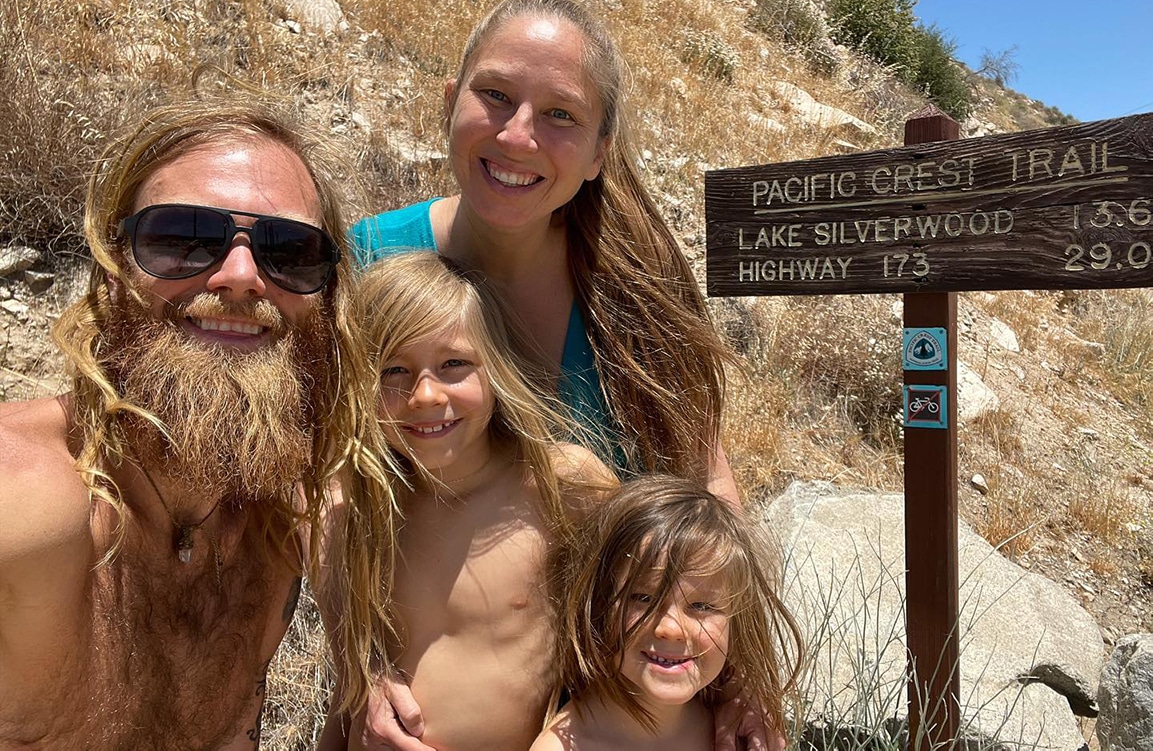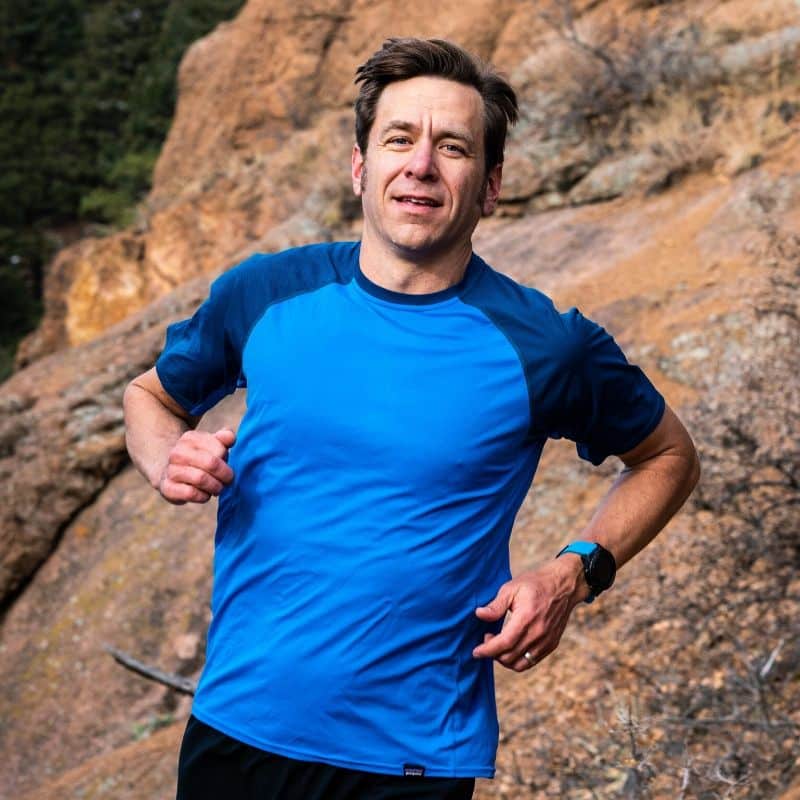
Ultrarunning Lessons from Planning Timothy Olson’s PCT Fastest Known Time Attempt
By Jason Koop,
Head coach of CTS Ultrarunning
Ultrarunner Timothy Olsen recently began his quest to set the Fastest Known Time (FKT) on the Pacific Crest Trail (track Timothy’s progress here), and I am part of the merry band of crazies supporting his effort from start to finish. For about the next eight weeks I’ll be on the road and trail with Timothy, his wife Krista and their boys Kai and Tristan, Timothy’s in-laws Bob and Debbie Loomis, and Kelly Newlon, who owns Real Athlete Diets and has been Timothy’s nutritionist for several years. If everything goes as planned, Timothy will run 2650 miles and reach the northern terminus of the PCT in less than 52 days. While you may not be preparing to run the PCT, there are lessons you can learn from our journey that can help you achieve your ultrarunning goals.
This is not my first rodeo. In fact, this will be fourth cross-country-type ultraendurance challenge I have supported over the past 20-plus years. Early on in my career I was part of a crew that supported the Tour de Cure cycling event from coast to coast. Then, as my career became more centered on ultramarathon coaching, I worked with Dean Karnazes when he ran across the United States and as he prepared for and completed 50 marathons in 50 states in 50 days. In the years since, I have helped prepare athletes for numerous FKT attempts, and crewed quite a few.
No two FKTs are alike, and cross-country or expedition length adventures are beasts unto themselves. I’ve learned a lot of valuable lessons over the course of preparing athletes for these challenges and supporting them during the events themselves. While each event had its own quirks, unique logistics, specific modalities, and individual challenges, they all shared some common themes.
Always play the long game.
During expedition length events, routines develop for many day-to-day activities. That can be quite helpful, because space, equipment, and time are typically limited and it reduces brain space to use routines to make many tasks quick and predictable. There’s no reason to reinvent the wheel every morning. Similarly, the same problems will tend to repeat themselves over and over again, too. So, when working through issues and solving problems, think about long term solutions rather than short term fixes.
This concept applies to training and to race-day strategies, too. If getting enough sleep is a consistent problem for an athlete, it doesn’t make sense to just focus on a medication or modality that will induce sleep tonight. Instead, we have to back up and take a more comprehensive look at why they are not getting enough sleep, what lifestyle factors and behaviors they can change that will positively affect sleep, how realistic those changes are, and then go about implementing changes long term. The process is similar for athletes who face repeated injury cycles, or bouts of GI distress or blisters during events. These problems will keep repeating until you address the root causes and create long term changes.
Be flexible.
I love to plan. But as much as I would like to have every detail dialed, I have discovered it’s far more beneficial to go into these projects with a ‘flexibility first’ attitude. This does not mean just winging it! Rather, it means doing copious amounts of research and planning so you understand as much as you can about the options and resources available when you inevitably have to change Plan A to Plan B, or all the way to P, Q, and R.
The longer your event, the less accurately you can forecast into the future. In a marathon, you can predict your future paces and upcoming challenge with reasonable accuracy. With a 100-mile race that will take 20+ hours to complete, predictions become much less accurate. In expedition-length events, they’re useless. My advice for Timothy and the rest of our crew was to keep thinking about 3-4 steps ahead in terms of problem solving. Any more than that and it’s just guessing.
Remember the athlete’s level of exhaustion.
Ultrarunning training and events are a team effort, whether that’s a literal support crew at a race or the cast of characters that supports your passion for running every day. Everyone has their own level of engagement and times when they are more or less energized. As strange as it may sound, it is easy to lose sight of cumulative toll on the athlete who has to be engaged all the way through. While the crew’s energy level may be high because they’re rested and spending time together in vehicles or at aid stations, the runner’s energy level may not be high.
In expedition length events this causes problems when the support crew’s demands on the athlete fail to consider the discrepancy between his or her level of exhaustion and the crew’s. What seems simple and easy to us, like discussing the next day’s logistics, may be more than Timothy can think about at that moment. Or he may not be in the mood for joking around. On the flip side, if an athlete is in a great mood and having a blast, their crew has to do their best to keep the fun going, even if you are cold, wet and tired yourself.
Not everyone has to do everything.
When the athlete you are supporting is undertaking a massively long challenge, there is a natural tendency to feel like you always need to be doing something. After all, the athlete is still going, so why aren’t you? The problem is, an exhausted crew is not as well prepared to help their exhausted runner. The best thing you can do for your athlete is to use downtime wisely so that you have the energy to be of assistance when called upon.
In many cases, particularly at the beginning of events and when athletes have substantial crew support, there’s a lot of redundancy. There may not actually be that much that needs to be done. If you are not needed or useful, don’t invent stuff to do just to be busy. Take some downtime and don’t feel bad or guilty about it. You are resting because the athlete can’t, and so you can do a better job when the time comes.
► Free Ultrarunning Training Assessment Quiz
Take our free 2-minute quiz to discover how effective your training is and get recommendations for how you can improve.
Be as self sufficient as possible.
When you are part of a support crew, you’re working to support your athlete and the other people in the crew, and some of their efforts will be to support your needs, too. You don’t need to be martyr who never asks for assistance (in fact, that will be more disruptive than helpful), but you do want to be as self-sufficient as possible. This means staying informed about the route or the daily plan, finding answers to your questions on your own if possible before asking the same question over and over again, and taking the time to keep your own gear organized and your area tidy.
When it comes to training, I similarly advise athletes to be as self-sufficient as possible. Having a training partner is nice, but don’t make your ability to train contingent upon their availability. When you go out on a run, carry the appropriate gear to handle foreseeable challenges. It’s better to be the person who can give a fellow runner directions or lend a rain jacket than to be the person in dire need of those things.
Give each other space and take some space when you need it.
During expedition length challenges like Timothy’s FKT attempt on the PCT, our small army of crew members will spend a lot of time with each other in close quarters. There will be little privacy, and we are guaranteed to get on each other’s nerves from time to time. It will be important for crew members to take some time each day for some personal space, even if it’s not very long.
Enjoying This Article? Get More Free Running Training Tips
Get our coaches' best training advice, delivered straight to your inbox weekly.
For many runners, training is the time they take for themselves during the day. It’s time away from the house and the office to recharge their emotional batteries. During ultramarathons, I often recommend that crew members take a short run or a hike at some point during the event, just to get some time for themselves as well. It lowers the stress level within the crew and helps everyone do a better job on the athlete’s behalf.
Keep stuff clean!
If the COVID pandemic has taught us anything, it’s to wash our hands! Expedition length adventures and stage races often get derailed because of respiratory and/or bacterial infections that rapidly spread through the crew and to the athlete. This can largely be mitigated with simple good hygiene practices. So, wash your damn hands!
On the home front, clean out your bottles with a bottle brush and soap and run soapy water through the nozzle, particularly if you are using any sort of drink mix in the bottle (seriously, have you ever looked in the nooks and crannies in the nipple of your favorite soft flask)?
Be a good human.
During epic events it’s easy to get caught up in your own hype and think the rules and norms don’t apply to you anymore, or that being in the middle of this massive challenge gives you license to be an asshole. It doesn’t. You don’t get to throw trash on the ground because you’re racing any more than you can or should when you’re on your home trails. You can’t pee in someone’s petunias instead of waiting for a more appropriate location. As a support crew, you can’t blow through stop signs because you’re in a rush to get to the next aid station or yell at the small town barista because the wifi isn’t strong enough to upload videos. Whether you want to be or not, we’re all representatives for this wonderfully weird sport and our individual actions affect the public’s perception of our entire community. So, play by the rules, respect nature and the National Forest Service, and be nice to people.


Comments 4
Great advice .., I found it interesting 👍
Thank you! I’ve been waiting to hear a podcast on this but this is great too!
Love it! As always!!
nice